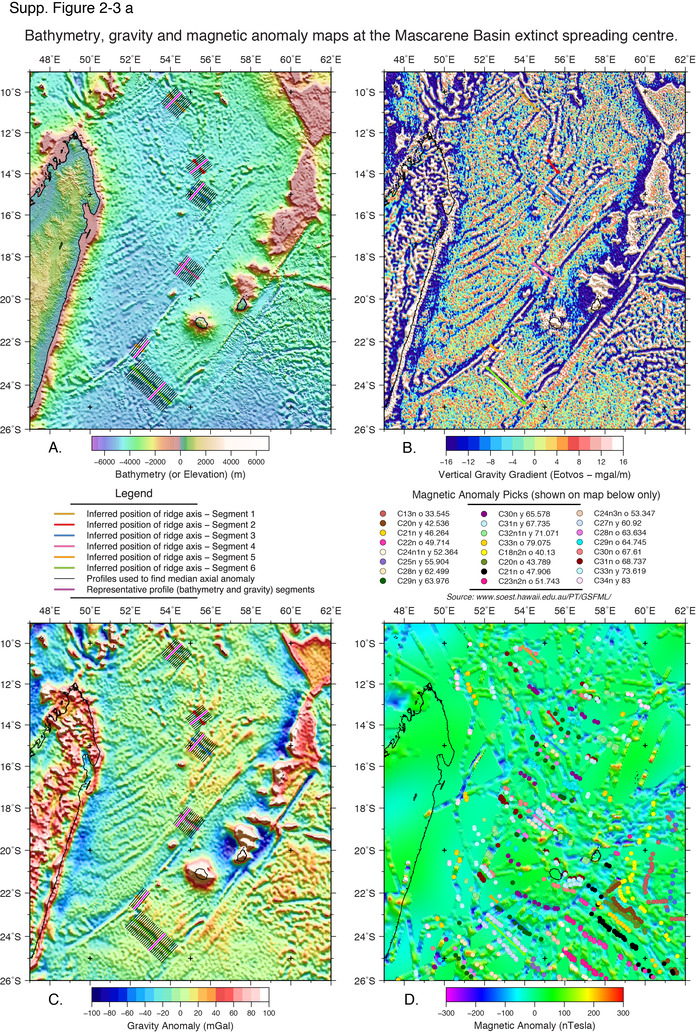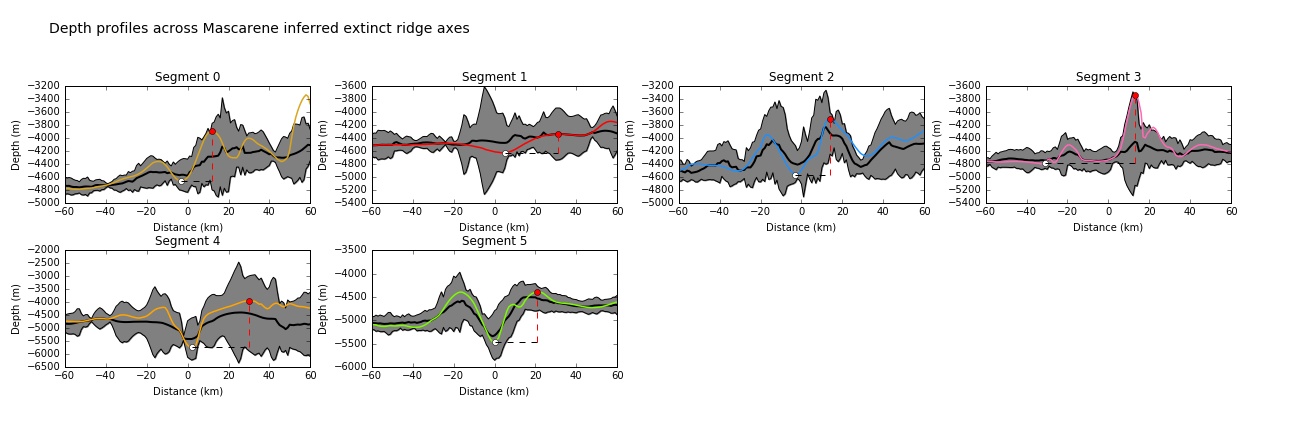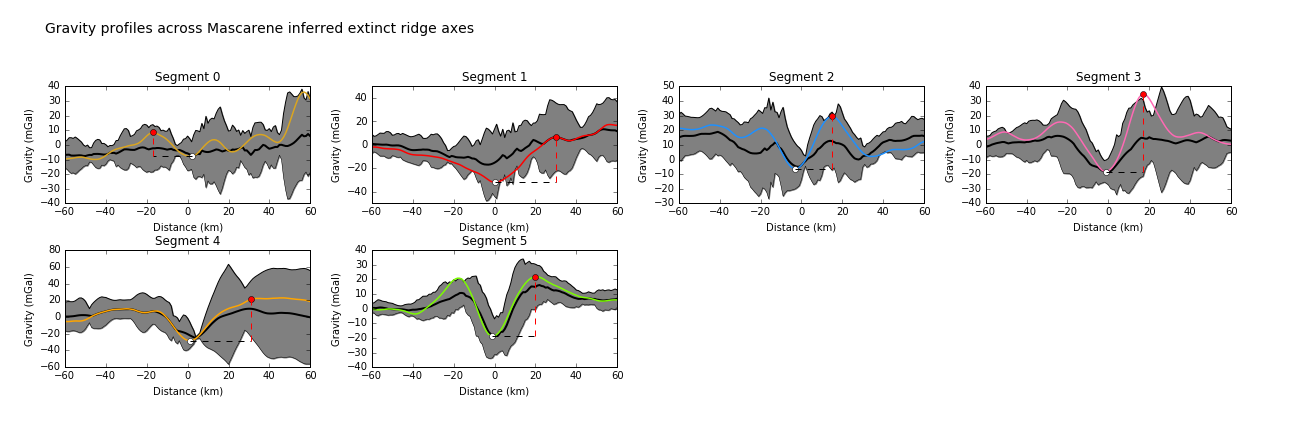| Ocean: | Indian |
| Spreading center type: | Large-scale extinct MOR |
| Time of cessation: | Ca. 62 Ma, Chron 27n (Bernard and Munschy, 2000) |
| Subsequent active spreading centre: | Carlsberg Ridge |
| Cessation style: | Bernard and Munschy (2000) proposed that spreading rates reduced for 2 Myr prior to ridge extinction. |
| Later deformation or volcanism: | While a deformational zone is present, this may have beemn formed during final stages of the ridge. |
The Mascarene Basin is a well-studied extinct ridge, alongside the Labrador Sea, South China Sea and the Aegir Sea ridge. The spreading center within this basin marked the locus of extensional rifting between the African and Indian tectonic plates, when the Seychelles were docked to the west side of the Indian continent and a lengthy period after Madagascar had been transferred to the African plate following cessation of spread in the West Somali Basin in the Lower Cretaceous. The spreading center was active for around 25 m.y. from 84-60 Ma, before a ridge jump to the east isolated the Seychelles microcontinent and the Carlsberg ridge became the active spreading-center in the central Indian Ocean (Bernard and Munschy, 2000; Eagles and Hoang, 2014).
Bissesuer et al. (2010), within a conference abstract, discussed the complex orientations of magnetic lineations, with opposing trends that they observe may be linked to propagation of a new spreading center from the sight of the dying segment, leaving “a wide zone of deformation”. They also argue for a ‘progressive’ transfer to the subsequent spreading center. Unfortunately there does not appear to have been any formal publication of these observations.
Many studies attribute both the commencement of spreading and cessation of spreading within the Mascarene Basin to proximity of hotspots. Proximity of the Marion hotspot has been implicated in commencement of spreading in the basin (Bhattacharya and Chaubey, 2001), and the Reunion hotspot is proposed to have influenced cessation and the subsequent commencement of spreading on the Carlsberg Ridge (Torsvik et al., 2013; Müller et al., 2001). Gaina et al. (2007) discuss the similarities between the relocation of the Mascarene Basin spread center to the Carlsberg Ridge, leading to isolation of the Seychelles microcontinent, and the relocation of the spreading center in the Enderby Basin to the Southwest Indian Ridge, with both reorganizations taking place in close proximity to an active hotspot.
The Mascarene Basin is a well-defined extinct ridge, yet there is considerable variability between axial segments and only four of the six segments that we define have a clear, characteristic gravity anomaly. This variability could be attributed to the proximity of the Reunion plume at the time of the ridge cessation and possible late-stage or post-cessation volcanism.
Bernard, A. and Munschy, M., 2000, Le bassin des Mascareignes et le bassin de Laxmi (océan Indien occidental) se sont-ils formés à l’axe d'un même centre d'expansion? Comptes Rendus de l’Académie des Sciences - Series IIA - Earth and Planetary Science, v. 330, no. 11, p. 777–783.
Bhattacharya, G.C. and Chaubey, A., 2001, Western Indian Ocean—a glimpse of the tectonic scenario. In, R. Sen Gupta and E. Desa, eds, The Indian Ocean: A Perspective, Lisse: A. A. Balkema Publishers, p. 691-729.
Bissesuer, D., Dyment, J., Deplus, C. and Yatheesh, V., 2010, Evolution of the Mascarene Basin with respect to the Reunion hotspot inception in the Deccan, In, EGU General Assembly Conference Abstracts, European Geophysical Union, Vol. 12, p. 14433.
Eagles, G. and Hoang, H.H., 2014, Cretaceous to present kinematics of the Indian, African and Seychelles plates, Geophysical Journal International, 196, p. 1–14.
Gaina. et al., 2007. Breakup and early seafloor spreading between India and Antarctica, Geophysical Journal International, v. 170, no. 1, p. 151–169.
Müller et al. 2001, A recipe for microcontinent formation, Geology, v. 29, no. 3, p. 203–206.
Torsvik et al., 2013, A Precambrian microcontinent in the Indian Ocean, Nature Geoscience, v. 6, no. 3, p. 223–227.


